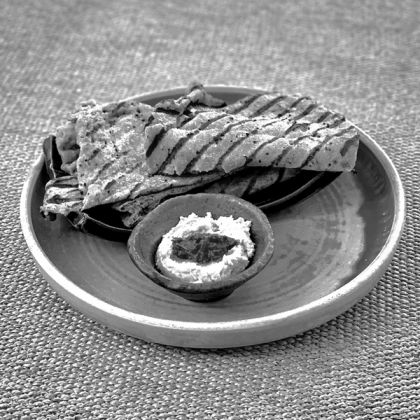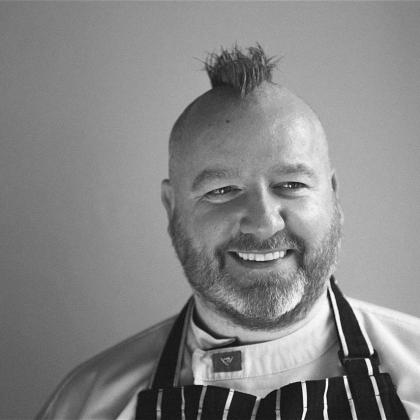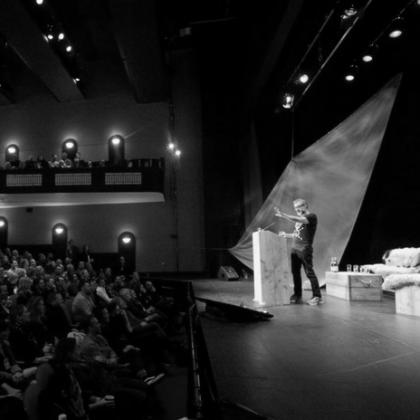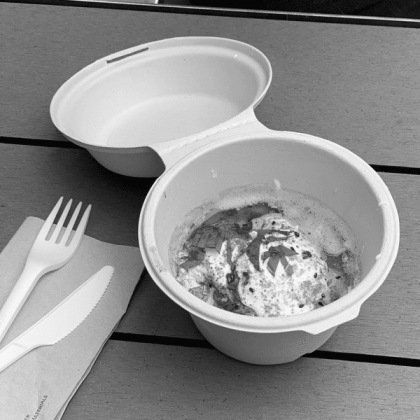A trip to Ballymaloe Cookery School any old day is an exhilarating experience; an exhibition of unique culinary tradition based around a passion for real, good food and a zeal for life. But to see the venerable institution play host to the kind of talent and innovation that is the Ottolenghi duo – Yotam Ottolenghi and Sami Tamini – is to see something very special indeed.
For those who’ve never heard of it, Ottolenghi is an upmarket London chain consisting of a restaurant and two deli stores, serving Middle Eastern fare with Mediterranean influences. The focus is on flavour, freshness and quality ingredients, which is the passion of its eponymous creator and his Palestinian partner. Think of pomegranate, star anise, chilli, rose water, piquant sumac, pistachio and hazel nuts, maple syrup, and an abundance of fragrant herbs, and you’ll get an idea of what a trip to Ottolenghi is like.
The pair came for a one-day cookery course at Ballymaloe, demonstrating recipes from their new book Plenty, and I was lucky enough to have bagged a place. I came with my notebook and pen in hand, and what I saw blew me away. Dishes of such simplicity yet extraordinary depth, spread out in a palate of jewel-like colours only possible in the unique and beautiful world of Ottolenghi. And while I tried my best to capture their technique and tips for adaptations, I could not, unfortunately, adequately record the intense and innumerable flavours present in almost every dish they created.
We sampled a broad variety of tastes and courses, from succulent lamb koftas with tahini to a moreish boozy chestnut and chocolate bar they’ve created for the Christmas season (although they themselves are Israeli and Palestinian). They paired juicy seafood (tiger prawns, scallops with their coral, and mussels) with zingy tomato and feta cheese, a combination many would imagine impossible and yet worked beautifully, helped by the addition of lemon zest and generous helpings of good Greek olive oil. We had stunningly pretty saffron rice studded with sharp little barberries, chopped pistachios and lifted by copious quantities of dill, chervil and tarragon. And we devoured mouthfuls of tasty roasted aubergine topped with a sharp salsa of walnut, gleaming fat pomegranate seeds and fresh coriander.
The success of these sensual creations? A love of food that leads its maker to want to add more of everything; more flavour, more colour, more texture. It’s food born of the need to be generous, as Ottolenghi said himself, as he loaded great green fistfuls of herbs into his beloved salad dishes. “We use loads of herbs. We don’t buy them in little packets, we buy them in giant bouquets at the market.”
And use your hands! “Don’t chop the herbs until death,” he urged. All food at Ottolenghi is chopped so as to reveal something of the fruit or vegetable’s former shape, to retain its true essence in the dish. Banished are over-processed looking ingredients that no longer bear any relation to their former selves. Cooked vegetables are carefully and individually blanched, steamed or boiled, often without the addition of salt, in order to reserve their texture, taste and very importantly, their colour. The result is beautiful food you can’t wait to eat, full of beautiful, deep, real flavours.
On our one-day course we had the wonderful once-off privilege of experiencing the culinary dynamism of Ottolenghi combined with the magic of Ballymaloe. In other words, a match made in heaven. While every dish created by the pair is a tribute to produce, the raw materials furnished to the chefs couldn’t have been any more perfect than those provided by the cookery school. They actually laughed with delight as they grasped the shiny aubergines, the bright green fennel bulb with its long fronds waving, or the plump raspberries for their semolina and raspberry tart, and said: “we’ve never had this experience before. This was all still in the ground this morning, just look at it!” The pair joked that they were awakened by the sounds of the little Jersey cows outside their window that morning, whose milk provided the yoghurt for their mashed beetroot with yoghurt and za’atar that afternoon. And how those amazingly fresh produce made Ottolenghi taste that day!
Yes, seeing and tasting Ottolenghi in action in the demo kitchen of Ballymaloe was a very special experience and one I’m not likely to recreate for myself. There’s something about all that passion and true love of food coming together in one place that made the cooking we’d travelled to see come alive in a way that could only have happened there. I will of course attempt to faithfully render each of the wonderful recipes I took away with me, but something tells me I may never again taste the likes of what I had that afternoon.
Look up the Ballymaloe Cookery School for upcoming short courses www.ballymaloe.ie
Roasted Aubergine with a Salsa of Walnut, Pomegranate and Coriander
Serves 4
2 medium aubergines
olive oil
Salsa
120g walnuts
50ml cider vinegar
2 cloves garlic, crushed
30g chopped coriander
50ml olive oil
sea salt and black pepper
seeds of 1/2 a pomegranate
Preheat the oven to 220°C/425°F/gas mark 7.
Cut the aubergines into 2cm thick slices. Place them on a baking sheet lined with greaseproof paper, brush both sides with plenty of olive oil and season generously with salt and pepper. Roast for 25-35 minutes or until nicely golden-brown. Remove from the oven and leave to cook down.
Meanwhile, roughly chop the walnuts and put them in a small bowl. Add the vinegar, garlic, coriander, olive oil, and some salt and pepper. Mix well, taste and adjust the seasoning as required.
To serve, arrange the aubergine slices on a serving plate, slightly overlapping. Spoon the salsa on top and sprinkle with pomegranate seeds.






